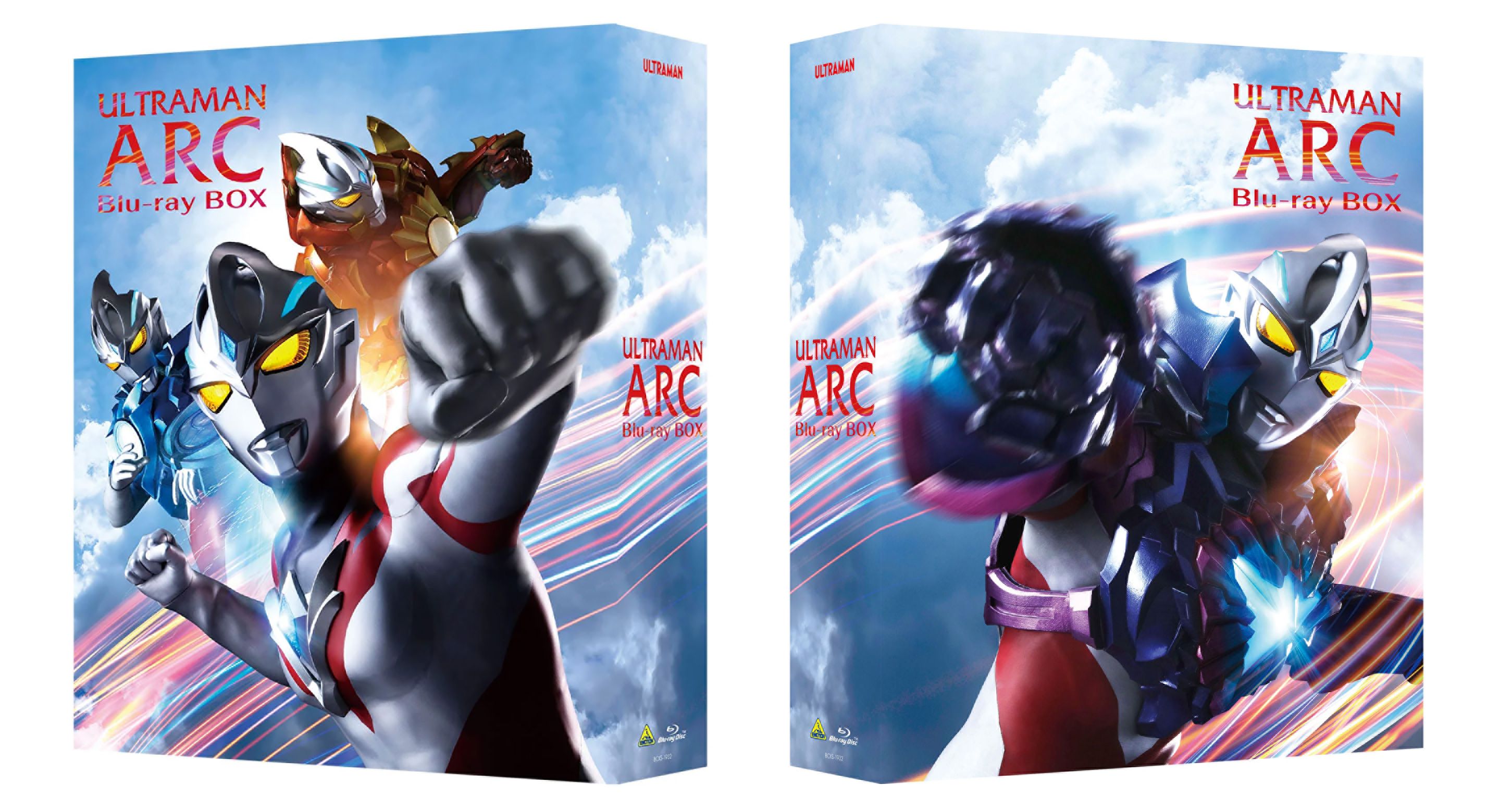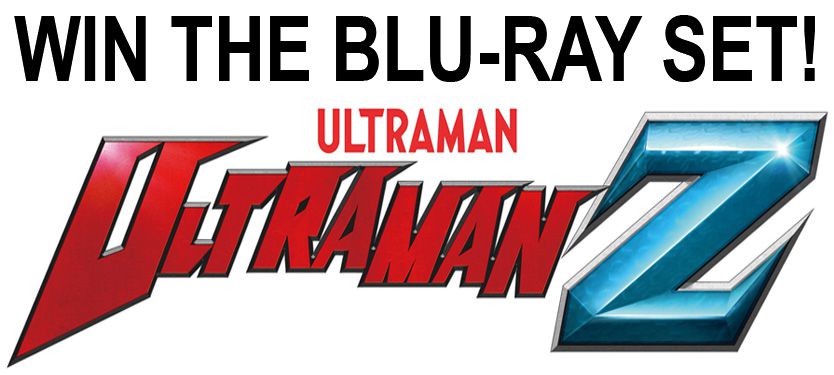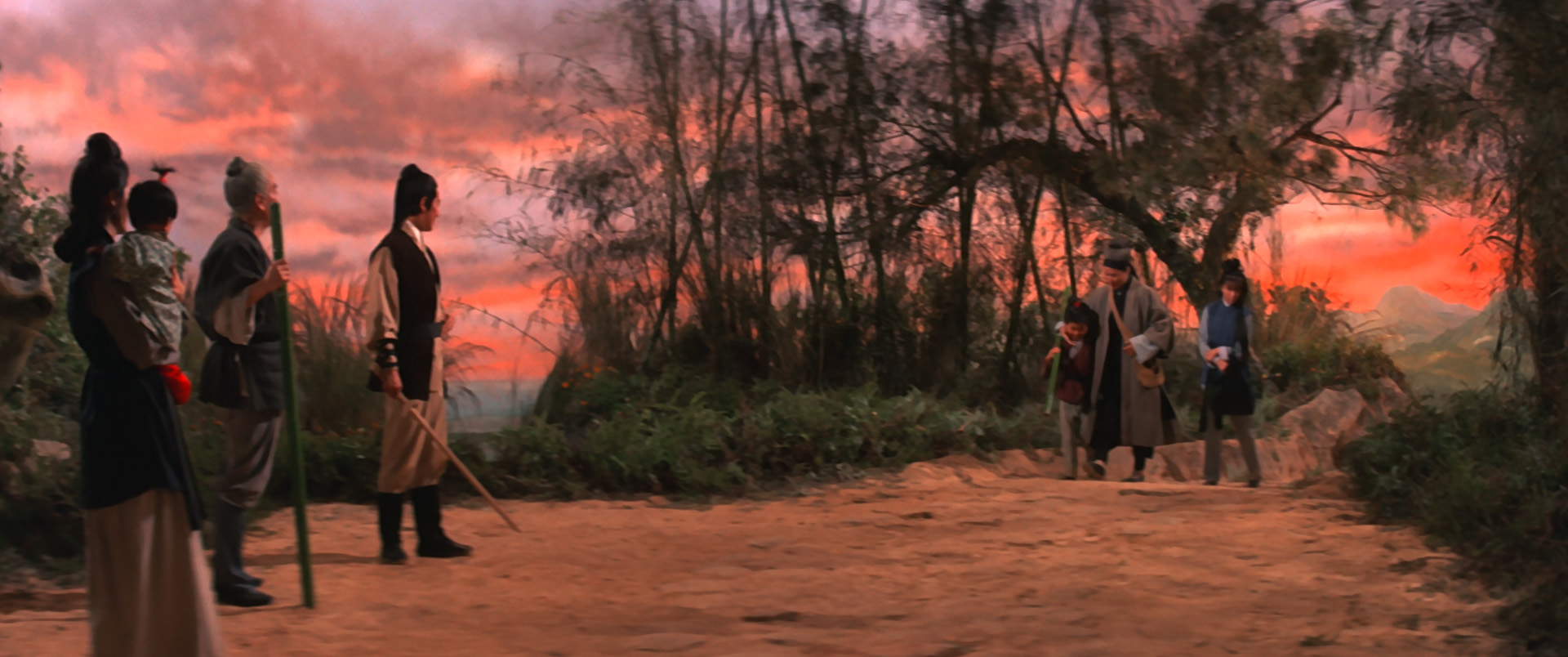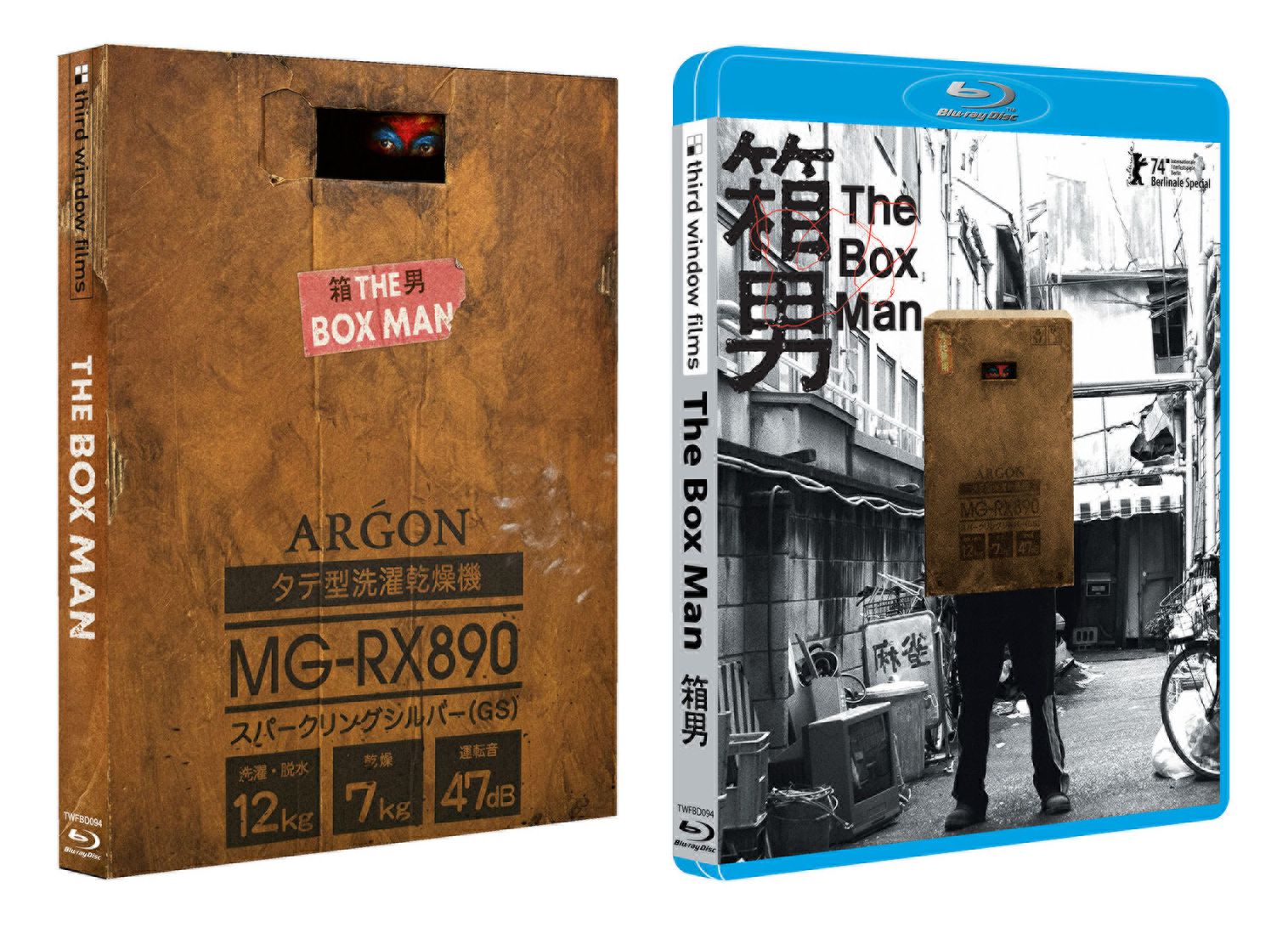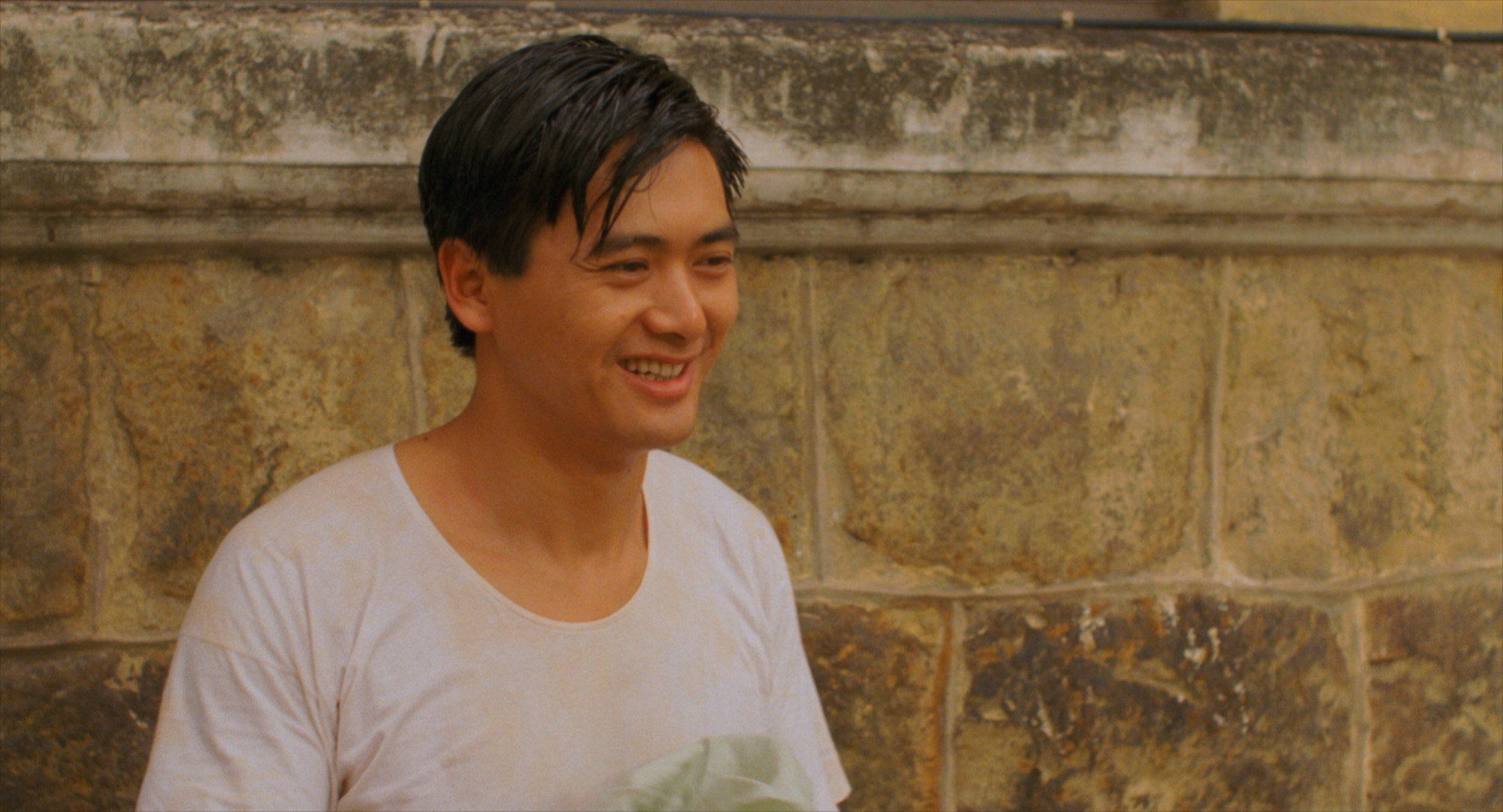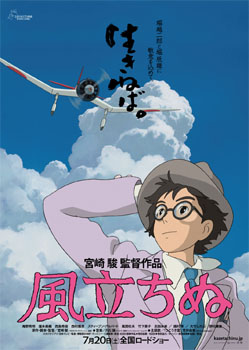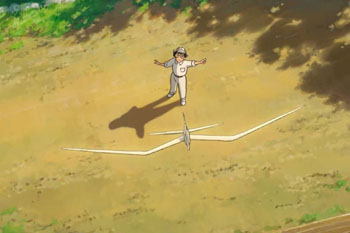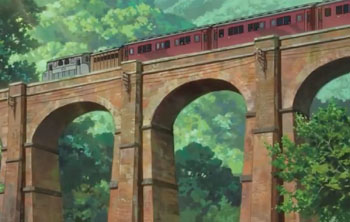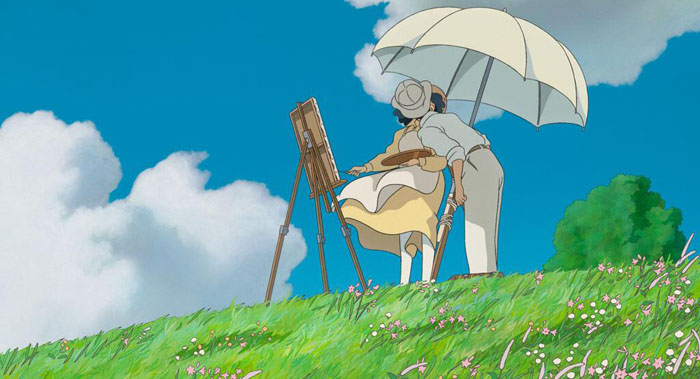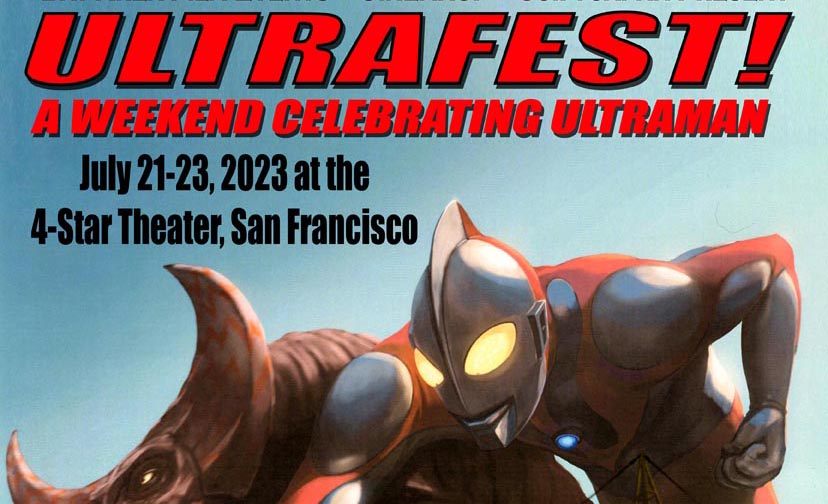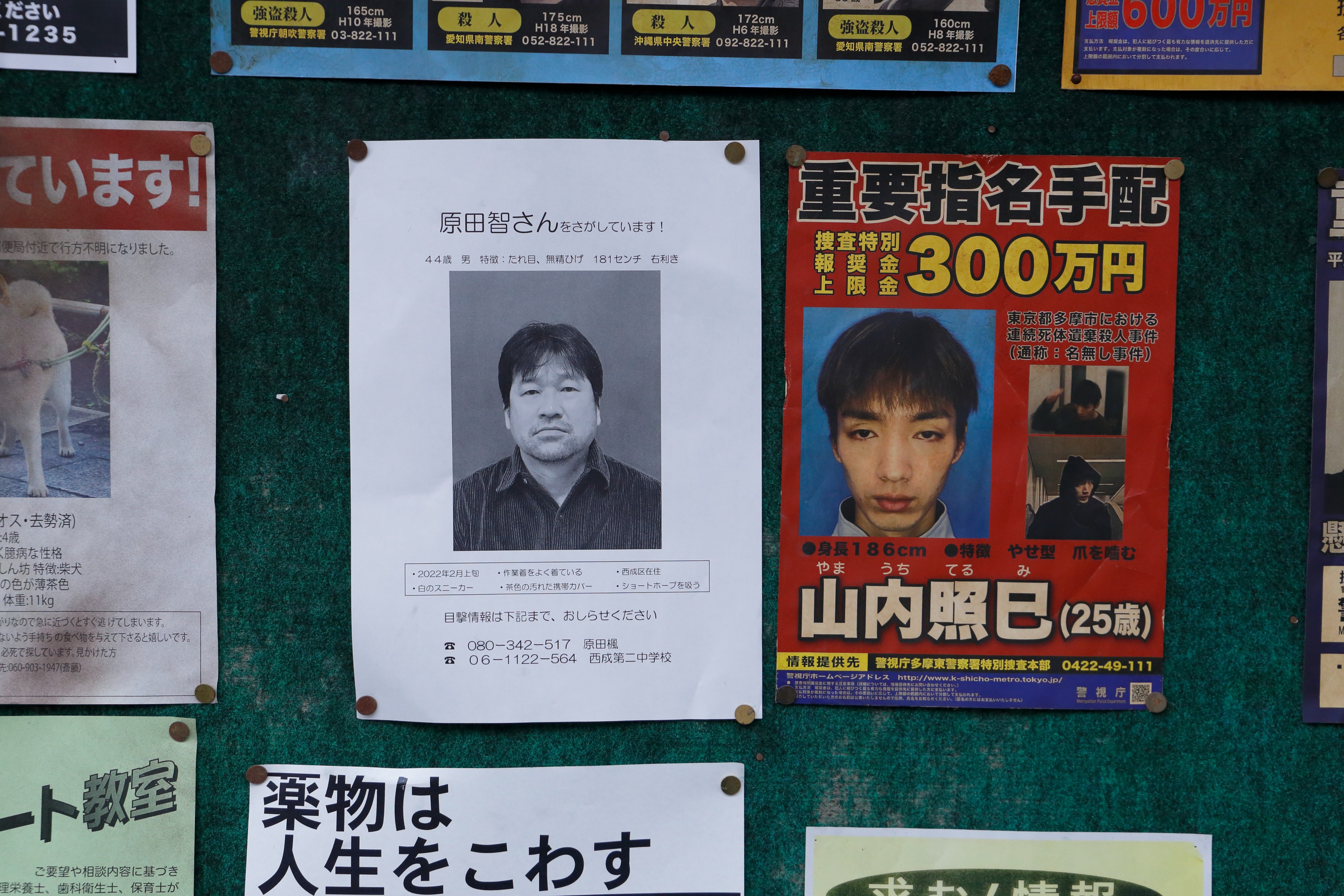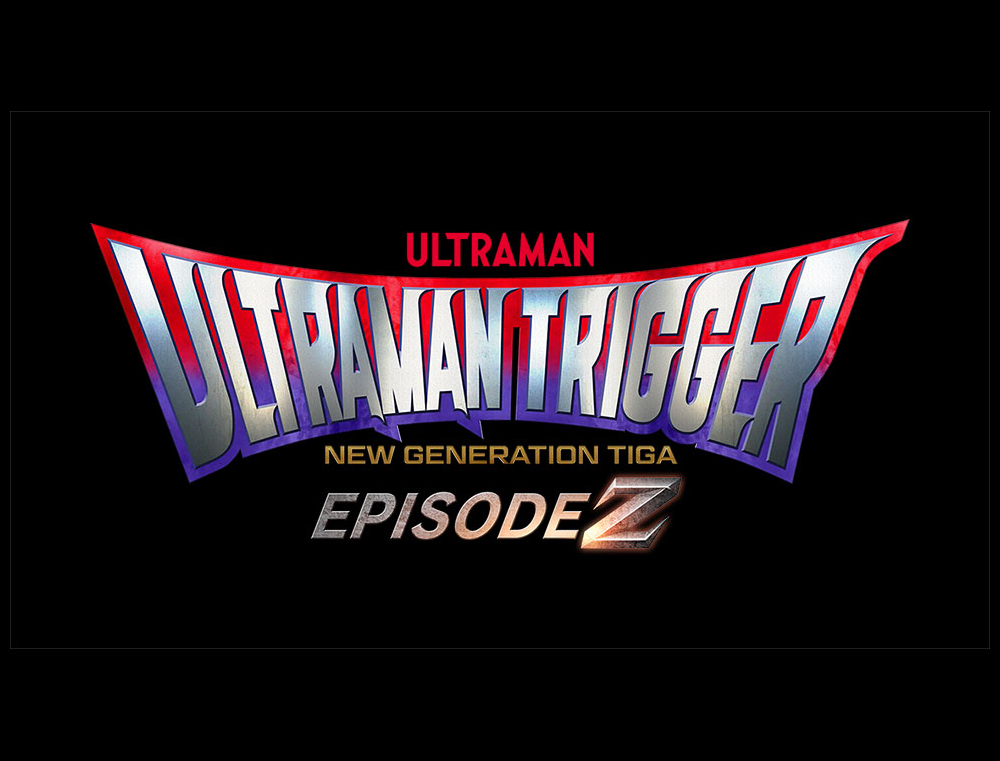English Notes for New Studio Ghibli Film Source: Studio Ghibli, Wild Bunch Official Movie Site: kazetachinu.jp (Japan) Studio Ghibli`s THE WIND RISES (????, Kaze Tachinu, 2013) will have its North American premiere at the Toronto International Film Festival on Wednesday, September 11, 2013. The studio recently announced this will be the final movie from internationally renowned filmmaker, Hayao Miyazaki, who is now retired from directing. The following production notes are courtesy of Studio Ghibli and international sales agent, Wild Bunch...
THE WIND RISES
A film by Hayao Miyazaki A tribute to Jiro Horikoshi and Tatsuo Hori
Synopsis
Jiro dreams of flying and designing beautiful airplanes, inspired by the famous Italian aeronautical designer Caproni. Nearsighted from a young age and thus unable to become a pilot, he joins the aircraft division of a major Japanese engineering company in 1927. His genius is soon recognized, and he grows to become one of the world’s most accomplished airplane designers. THE WIND RISES chronicles much of Jiro`s life, and depicts key historical events that affected deeply the course of his life, including The Great Kanto Earthquake of 1923, The Great Depression, the tuberculosis epidemic, and Japan’s plunge into war. He meets and falls in love with Nahoko, grows and cherishes his friendship with his colleague Honjo, and innovates tremendously, leading the world of aviation into the future. Hayao Miyazaki brings together the engineer Jiro Horikoshi and the author Tatsuo Hori, who lived during the time of the story of THE WIND RISES, to create Jiro, a fictional character at the center of an epic tale of love, perseverance, and the challenges of living and making choices in a turbulent world.
Project Proposal by Director Hayao Miyazaki
Airplanes are Beautiful Dreams Zero plane designer Jiro Horikoshi and his Italian forerunner Gianni Caproni are two men pursuing a common aspiration, bonded by friendship across time and space. The two overcome numerous failures, devoting themselves to realizing their boyhood dreams. In Japan’s Taisho Era (1912-1926), a country boy decides to become an aircraft designer. He dreams of building a plane that flies like the beautiful wind.
As a young man he goes off to college in Tokyo, becoming an elite engineer in the huge defense industry. His talent blooms and he ultimately creates a beautiful airplane, one that will leave its mark on aviation history -- the Mitsubishi A6M1, later to become the Navy Type 0 Carrier Fighter, better known as the Zero fighter. For three years from 1940, the Zero fighter was the world’s finest warplane. From his boyhood to his youth, the years during which our main character lives are weighed down by a sense of stagnation more intense than the one hanging over Japan today: The Great Kanto Earthquake of 1923, The Great Depression, unemployment, poverty and tuberculosis, revolutions and fascism, suppression of free speech, one war after another. Meanwhile, popular culture flowered; modernism and nihilism, as well as hedonism, were prevalent. Poets fell prey to illness and death in their journeys. Our protagonist Jiro engaged in airplane design at a time when the Empire of Japan was heading to its destruction and ultimate fall. Yet the intention of this film is not to condemn war, nor is it about stirring up young Japanese with the excellence of the Zero fighter. I have no plans to defend our lead character, such as by saying that he actually wanted to make civilian aircraft. I want to portray a devoted individual who pursued his dream head on. Dreams possess an element of madness, and such poison must not be concealed. Yearning for something too beautiful can ruin you. Swaying towards beauty may come at a price. Jiro will be battered and defeated, his design career cut short. Nonetheless, Jiro was an individual of preeminent originality and talent. This is what we will strive to portray in this film. The title THE WIND RISES comes from a novel of the same name, written by Tatsuo Hori. Hori took a line from Paul Valéry’s poem, Le vent se lève, il faut tenter de vivre [The Graveyard by the Sea], and translated it into Japanese: Kaze tachinu, iza ikimeyamo. (The wind is rising! We must try to live.). Our film combines Jiro Horikoshi and writer Tatsuo Hori, two actual people of the same era, into one person as “Jiro”, our central character. It will be an unusual work of complete fiction that depicts the youth of the 1930s. Our story will be woven using the birth of the later-mythicized Zero fighter as our warp, and the meeting and parting of a young engineer Jiro and the beautiful, ill-fated girl Nahoko as our weft. Our good ol’ Caproni, transcending time and place, will be there to add some color to the story’s fabric. Notes on the Film’s Look
I want to paint Japan’s verdant landscape from the Taisho Era to the early Showa Era with utmost beauty. The skies then were still clear with lofty white clouds. Water flowed clearly. No litter was to be found in the countryside. On the other hand, poverty was widespread in the cities. I don’t want to obscure architecture by using sepia tones; thus we will be bold with East Asian colors of modernism. Roads are bumpy and uneven. Shop signs and billboards line up chaotically. Jumbles of wooden utility poles are everywhere. This film needs to be a kind of biography of the protagonist’s boyhood, youth and middle years, but a designer’s daily life would most likely be quite uneventful. Thus, bold cuts and jumps in time are inevitable, while minimizing the audience’s confusion. The film probably will be an interweaving of three types of imagery: Daily life scenes will be an accumulation of quiet and plain moments. The dream sequences will be much more free and sensual: swaying time and weather, rolling terrains, and flying objects floating with ease. The dreams will embody the obsessive singular focus of Caproni and Jiro. Technical explanations and meetings will be caricatured. I have no interest in showcasing facts and trivia about aviation technology, but when needed, they will be presented in a bold, cartoony style. The malady of this type of cinematic work is too many meeting scenes, with individual fates decided in the meeting room. Our work will not have any such scenes. Meetings will be depicted only when absolutely necessary, as cartoons and without dialogue. Our attention will be directed towards the portrayal of people. I want to create something that is realistic, fantastic, at times caricatured, but as a whole, a beautiful film. ![]() -- Hayao Miyazaki, January 10, 2011
-- Hayao Miyazaki, January 10, 2011
Producer’s Notes
Japanese and War - Toshio Suzuki, Producer, Studio Ghibli Loves fighter planes, but hates war -- Hayao Miyazaki is a man of contradictions. Miya-san has lived his life caught in between his despair and his faith in humanity. How did he become this way?
Though this is not well known, Hayao Miyazaki is very knowledgeable about war. He is familiar with the history of not only Japan’s wars but also of wars around the world, and gets especially passionate when talking about the Eastern Front of World War II. He has read every book he can possibly get hold of about its numerous events. His wealth of knowledge spans from fighters and tanks to the kinds of weapons used in those battles. The death toll was 20 million according to him. He denounces it as the most foolish conflict mankind has ever experienced. At the same time, he most desperately longs for peace more than anyone. He took part in many anti-war demonstrations in his younger days, and still continues to hold the same belief today. It was about five years ago that this man began working on an idea for a manga series whose protagonist is Jiro Horikoshi, the designer of the Zero fighter. He told me just today that his story notebook for THE WIND RISES had the year 2008 written in it. Knowing him well, I as a matter of course suggested that his next film should be THE WIND RISES. He flatly rejected this suggestion. “Suzuki-san, what are you playing at? I’m drawing this manga as a hobby. Making a movie based on this is out of the question. “Animation should be created for children. We shouldn’t make a film only for older audiences.” I, however, refused to back down. Curiosity is the basic drive of a producer. What kind of film would Hayao Miyazaki create with war as the subject matter? Battle scenes are Miyasan’s forte. Surely, he wouldn’t make anything warlike for his next work. I already knew that well. However, when thwarted from using his strongest technique, an author frequently pens masterful work. My initial suggestion was made in the summer of 2010. Miya-san and I continued to discuss it. I recall that it was in the autumn when he said this: “All right. I will try and see if this can be made into a feature. Give me until the end of the year.” I will never forget the day that the decision was made to move forward on this film. It was December 28, 2010. Miya-san immediately started storyboarding in the new year. Very soon, he finished the storyboards depicting Jiro’s childhood through his encounter with the heroine Nahoko amidst The Great Kanto Earthquake of 1923. This was one day before The Great East Japan Earthquake hit us. Hayao Miyazaki is not the only individual who has felt both despair and faith in humanity during the 68 years since the end of World War II. I am convinced this theme is the greatest issue facing the Japanese people. ![]() -- Toshio Suzuki, May 28, 2013
-- Toshio Suzuki, May 28, 2013
About the Theme Song
“Hikoki Gumo” Lyrics, Music and Performed by Yumi Arai A white sloping path runs up into the sky A gently swaying, misty haze, surrounding and holding Unnoticed by anyone, all alone Soaring upwards Not afraid of anything, Dancing up Longing to be in the sky Speeding through the sky Awhole life, a vapor trail Even before dying, from that window, up high watching the sky, now no one understands No one would understand All they could think was... “Too young” Yet... happy Longing to be in the sky Speeding through the sky A whole life, a vapor trail Longing to be in the sky Speeding through the sky A whole life, a vapor trail
About the Poem
“Who has seen the wind?” Original poem by Christina Rossetti Japanese translation by Yaso Saijo (Nippon Columbia) Who has seen the wind? Neither I nor you: But when the leaves hang trembling The wind is passing thro’. Who has seen the wind? Neither you nor I: But when the trees bow down their heads The wind is passing by.
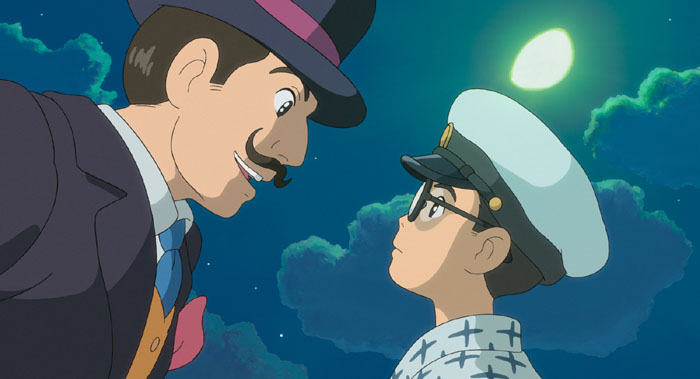 Gianni Caproni and young Jiro. Image courtesy of Studio Ghibli and Wild Bunch. © 2013 Nibariki ? GNDHDDTK
Gianni Caproni and young Jiro. Image courtesy of Studio Ghibli and Wild Bunch. © 2013 Nibariki ? GNDHDDTKAbout the Characters
From Project Proposal by Hayao Miyazaki Jiro Horikoshi (from boyhood to middle age years) The film’s protagonist is a bubbling explosive mix of loud frenzy, wild excitement, extreme focus, a strong attachment to freedom, individualism, excess pride, realism and idealism. He also has an exceedingly cool and brilliant mind. He is stylish and dashing, yet shy. Agile, affable and polite. One is reminded of the poet Michizo Tachihara, who died young. Jiro admires the authors Thomas Mann and Hermann Hesse, and listens to Schubert. Everyone at the major corporation in the war industry where he is employed recognizes his talent, and he navigates society with dexterity and composure. Jiro harbors strong ambitions to create his own beautiful airplane. Nahoko A beautiful and cheerful girl, who happens to be a passenger on the same train as Jiro on the day of The Great Kanto Earthquake. Ten years later, she has a fateful re-encounter with Jiro and falls in love with him. She suffers from tuberculosis. Her name comes from author Tatsuo Hori’s representative work titled Naoko. Our old man, Gianni Caproni An airplane creator known worldwide from the dawn of Italian aviation through the 1930s. He appears in Jiro’s dreams to stir up, advise and voice Jiro’s thoughts and emotions. Caproni does not age.
About the Director
HAYAO MIYAZAKI
Born in 1941 in Tokyo. After graduating from Gakushuin University in 1963 with a degree in Political Science and Economics, he joined Toei Animation Company as an animator. He worked under the director Isao Takahata for scene planning and key animation for the production of THE LITTLE NORSE PRINCE VALIANT (????? ???????, Taiyoo no Ooji: Horusu no Daibooken, 1968). He then moved to the animation studio A Production with Takahata in 1971 where he worked on the original concept, screenplay, layout design and key animation for PANDA! GO PANDA! (????????, Panda Kopanda, 1972). He worked at various studios such as Zuiyo Eizo, Nippon Animation, and Telecom, and did scene planning and layout designs for the TV series HEIDI, A GIRL OF THE ALPS (??????????, Arupusu no Shoojo Haiji, 1974) and FROM THE APENNINES TO THE ANDES (?????????, Haha o Tazunete Sanzenri, 1976), and directed his first TV series CONAN, THE BOY IN FUTURE (???????, Mirai Shoonen Konan, 1978). He debuted as director of a theatrical feature with THE CASTLE OF CAGLIOSTRO (????? ????????, Rupan Sansei: Kariosutoro no Shiro, 1979). In 1984, Miyazaki wrote and directed his feature NAUSICAÄ OF THE VALLEY OF THE WIND (????????, Kaze no Tani no Naushika), based on his original graphic novel which had been serialized in the monthly animation magazine Animage. Miyazaki co-founded Studio Ghibli in 1985 with Takahata, and has directed eight feature films since. His film SPIRITED AWAY (????????, Sen to Chihiro no Kamikakushi, 2001) broke every box office record in Japan, and garnered many awards, including the Golden Bear at the 2002 Berlin International Film Festival and the Oscar for Best Animated Feature Film at the 2003 U.S. Academy Awards, and HOWL’S MOVING CASTLE (???????, Hauru no Ugoku Shiro, 2004) received the Osella Award at the 2004 Venice International Film Festival. Miyazaki was awarded the Golden Lion for Lifetime Achievement at the 2005 Venice International Film Festival. PONYO ON THE CLIFF BY THE SEA (???????, Gake no Ue no Ponyo, 2008) marks his latest directorial effort. He also contributed to the planning and wrote the screenplay for the two most recent Ghibli films: THE SECRET WORLD OF ARRIETTY (????????????, Karigurashi no Arrietty, 2010) and FROM UP ON POPPY HILL (???????, Kokuriko-Zaka Kara, 2011). His new film THE WIND RISES was released on July 20, 2013 in Japan. Miyazaki has published a number of books of essays, drawings and poems, including Shuppatsuten 1979 - 1996 (Starting Point: 1979 - 1996). He has designed several buildings, including the Ghibli Museum, Mitaka, which opened in 2001, for which he serves as Executive Director. Works of Hayao Miyazaki TV Series 1978: CONAN, THE BOY IN FUTURE 1980: LUPIN THE THIRD - Second TV Series (?????, Shin Rupan Sansei) 1982: SHERLOCK HOUND THE GREAT DETECTIVE (???????, Meitantei Homuzu) Short Films 1992: THE BLUE SEED (???????, Sorairo no Tane) 1995: ON YOUR MARK (?????????, On Yua Maaku) 2001: THE WHALE HUNT (?????, Kujiratori) 2001: KORO’S BIG DAY OUT (???????, Koro no Osanpo) 2002: MEI AND THE BABY CAT BUS (????????, Mei to Koneko Basu) 2006: HOUSE HUNTING (?????, Yadosagashi) 2006: MON MON THE WATER SPIDER (???????, Mizugumo Monmon) 2006: THE DAY I BOUGHT A STAR (??????, Hoshi wo Katta Hi) 2010: MR. DOUGH AND THE EGG PRINCESS (????????, Pandane to Tamago Hime) Feature Films 1979: THE CASTLE OF CAGLIOSTRO 1984: NAUSICAÄ OF THE VALLEY OF THE WIND 1986: CASTLE IN THE SKY (???????? Tenkuu no Shiro Rapyuta) 1988: MY NEIGHBOR TOTORO (???????, Tonari no Totoro) 1989: KIKI’S DELIVERY SERVICE (??????, Majo no Takkyuubin) 1992: PORCO ROSSO (???, Kurenai no Buta) 1997: PRINCESS MONONOKE (?????, Mononoke Hime) 2001: SPIRITED AWAY 2004: HOWL’S MOVING CASTLE 2008: PONYO ON THE CLIFF BY THE SEA 2013: THE WIND RISES
About the Composer
JOE HISAISHI Joe Hisaishi was born in Nagano, Japan in 1950. He started to show his interest in minimal music when he was a student at Kunitachi College of Music, and started his career as a modern music composer.
Starting with NAUSICAÄ OF THE VALLEY OF THE WIND, Hisaishi has produced music for 9 Hayao Miyazaki films, including MY NEIGHBOR TOTORO and PONYO ON THE CLIFF BY THE SEA. He also composed the music for HANA-BI (???, 1998) directed by Takeshi Kitano, DEPARTURES (?????, Okuribito, 2008) directed by Yojiro Takita, VILLAIN (??, Akunin, 2010) directed by Sang-il Lee and TOKYO FAMILY (????, Tokyo Kazoku, 2013) directed by Yoji Yamada. He has collaborated on the music production of nearly 70 films at home and abroad. In 2001, he made his debut as a film director with QUARTET (?????, Karutetto), taking charge of the theme music and co-writing the script. The film was officially selected for the World Competition section of the Montreal Film Festival. Hisaishi also is well-reputed as a skilled performer, ranging from piano soloist to orchestra conductor. Since his debut, he has released nearly 30 solo albums, including “MKWAJU” (1981) and “Melodyphony” (2010). Hisaishi serves as a Professor at Kunitachi College of Music and in 2009 he received Japan’s Medal of Honor with Purple Ribbon.
Comments by Lead Voice Actor, Hideaki Anno
Suddenly, one day, I got a phone call from Suzuki-san (Toshio Suzuki). “We want you to do the voice for Jiro.” “Don’t think I can do it,” was my immediate thought. But still, I was told that this was a personal request from Miya-san (Hayao Miyazaki), so we decided to first do a tryout to see if it was feasible. After the audition, Miya-san approached me, beaming with a smile I’ve not seen for a long time, and said, “I want you to do Jiro.” At that, I knew, “That means I’ve got to do it.” What the film’s character Jiro Horikoshi and I have in common is that we both are in a profession whose work is to “give shape to dreams.” I can really understand that aspect of him, and can relate to him at a daily level of my own life. For the voice recording sessions, I went in and did Jiro’s voice as my usual, plain self. Miya-san was pleased, and that reaffirmed my take on Jiro. Creating animation and movies and creating airplanes may differ in the end product, but I’m convinced that both professions are the same in that we commit ourselves to giving shape to, and realizing, dreams. HIDEAKI ANNO as scriptwriter / director Born in 1960 in Ube City, Yamaguchi Prefecture, Japan. Hideaki Anno is responsible for the key animation of the “Giant Warrior” climax scene of Hayao Miyazaki’s NAUSICAÄ OF THE VALLEY OF THE WIND. His directorial debut came with the original video animation GUNBUSTER! (???????!, Toppu o Nerae!, 1988), followed by the television series NADIA: THE SECRET IF BLUE WATER (??????????, Fushigi no Umi no Nadia), first aired on NHK in 1990, for which Anno was credited as Chief Director and shares the director’s credit with Shinji Higuchi. His brainchild, the television animation series NEON GENESIS EVANGELION (???????????, Shin Seiki Evangerion, 1995) and its film edition (1997) were both huge successes designated as social phenomena. In 2000, Anno helmed the first live action feature, RITUAL (??, Shiki-Jitsu), of Studio Kajino, the Studio Ghibli live action label. In 2006, Anno established a new movie production company, Khara Inc., as its President. He is credited for the original story and screenplay, and as chief director and executive producer for Khara’s first project, the "Rebuild of Evangelion" film series, first released in 2007.
Production Notes
Jiro Horikoshi and Tatsuo Hori
This is the first time a character in a Studio Ghibli animated feature is modeled after real people. Two individuals who lived in the same era -- Jiro Horikoshi, the aeronautical engineer who designed and created the legendary Zero fighter, and the novelist Tatsuo Hori -- were melded to become the film’s protagonist Jiro, who strives to live each day to the fullest, despite being battered and defeated by arduous times. Past Miyazaki works often told stories taking place over three to four days. This latest work presents thirty years of Jiro’s life on an epic scale. The character Jiro perhaps can be considered to be the director Hayao Miyazaki’s projection of himself. “We must live...” Advertising copy for Miyazaki works often refers to “life” and sends powerful messages on current issues to contemporary audiences. The tagline for The Wind Rises -- “We must live.” -- has an important connection to Miyazaki’s signature film NAUSICAÄ OF THE VALLEY OF THE WIND. That film is based on his graphic novel, but depicts only the first and part of the second volume of the seven-volume series. After its theatrical release, the story of Nausicaä’s search to find a way for humanity and nature to coexist was continued in graphic novel form. In the seventh and final volume, this epic tale comes to a close with the words “We must live...” in the last frame. Nausicaä and her friends chose to live vigorously despite adversity. The characters of THE WIND RISES live in 1920s and 30s Japanese society, which bears an uncanny resemblance to Japan today, fraught with economic depression, public distrust of politics, and a great earthquake. “We must live...” conveys Miyazaki’s conviction that we must live life to its fullest in all circumstances. Studio Ghibli’s lettering and ???? (Tenjo Taifu)
Producer Toshio Suzuki’s handwriting is often seen in Studio Ghibli movie title designs and advertisement copy. His calligraphy can be found in this film as well. Miyazaki’s favorite calligraphy in the film is Zen priest Ryokan’s ???? (Tenjo Taifu - Great Winds in the Skies). This calligraphy, which appears in two places in the movie, was written by Suzuki. • No records remain regarding Ryokan’s interpretation of ????, but it is commonly thought to mean, “Even if no wind seems to be blowing on the ground, great winds (Buddha’s benevolence) are blowing high in the skies and watching over us.” • The Japanese main title design for THE WIND RISES is by Miyazaki. He also designed the main title for PONYO ON THE CLIFF BY THE SEA. Book of Ecclesiastes A passage in Yoshie Hotta’s book, Kuu no Kuu Nareba koso, quotes from the Book of Ecclesiastes of the Old Testament: “Whatever your hand finds to do, do it with all your might.” Miyazaki admired Hotta, and mentioned this passage in a lecture, stating, “In any kind of work, there is probably a moment where you appreciate that you may have created something truly meaningful. I think these words say that we must strive to find that special moment.” Several times in this film Caproni, a revered aeronautical engineer who appears in Jiro’s dreams, asks Jiro, “Are you living your years to the full?” This question originates from Yoshie Hotta’s last collection of essays. By having Jiro’s spiritual mentor Caproni pose this question, perhaps Miyazaki poses this question to today’s Japan. Airplanes and Floating in the Air
One of the true visual pleasures of Miyazaki films is seeing the protagonist flying the skies, and the compelling sense of floating, such as seen in NAUSICAÄ OF THE VALLEY OF THE WIND, CASTLE IN THE SKY, KIKI`S DELIVERY SERVICE and PORCO ROSSO. There are no levitation stones or magic spells in THE WIND RISES, but as in past works, many scenes in the sky appear in this film. The sky, airplanes, love, cigarettes... THE WIND RISES is packed with the favorite things of Hayao Miyazaki. Hayao Miyazaki and Stephen Alpert Stephen Alpert worked at Studio Ghibli’s International Division until the end of 2011. He always accompanied Miyazaki on his trips overseas, and their relationship eventually became a friendship. When Alpert had to leave Ghibli and return to the U.S. due to family matters, Miyazaki wanted to draw a caricature portrait of him as a goodbye gift. The director made numerous attempts until Alpert’s day of departure but wasn’t able to draw a satisfactory portrait in time. Then, the next year, the drawing of Alpert popped up in the storyboards for THE WIND RISES. Miyazaki finally succeeded in capturing Alpert’s likeness in his storyboard in the character of Castorp. Alpert flew back to Japan to provide the voice of Castorp. This character, a product of their friendship, plays matchmaker for Jiro and Nahoko, as well as an important role in conveying the world’s situation in the film. Hikoki Gumo (Vapor Trail)
An event featuring producer Toshio Suzuki and Yumi “Yuming” Matsutoya took place in December 2012. On stage, Suzuki made a sudden offer to Matsutoya, saying, “Your song "Hikoki Gumo" matches perfectly to the world of the film we are now making. I’m discussing (with director Miyazaki) the possibility of using it as the film’s theme song.” This offer surprised everyone because it came even before the public announcement of the production of THE WIND RISES, so neither the staff nor Matsutoya herself saw this coming. Matsutoya readily agreed, saying, “You just gave me goose bumps. Maybe my forty-year career as a musician was all meant for this moment...” Thus, 24 years after collaborating on Miyazaki’s KIKI`S DELIVERY SERVICE, Studio Ghibli and Yuming paired up for this film. Matsutoya has special memories attached to her song “Hikoki Gumo” which is from her debut album (released under her maiden name Yumi Arai). Miyazaki also gave the song his full approval, saying that, “It fits the film perfectly.” The theme song “Hikoki Gumo” is used in the film’s closing. Distinctive Sound Effects A bold choice was made to use sound effects created by the human voice for this film. Miyazaki expressed particular interest in human-generated sound effects from the early stages of this production. Various kinds of sounds, from revving airplane propellers, hissing steam locomotives, and car engine noises to the ground rumbling in the Great Kanto Earthquake, were performed by human voice. The short animation HOUSE HUNTING (original story, screenplay and directed by Hayao Miyazaki), screened at the Ghibli Museum since 2006, also included experimental human voice effects; this is the first time it has been done for a Studio Ghibli animated feature. Human voice sound effects add a distinctive character to many vehicles appearing in the film and to important environments. Miyazaki himself wanted to do the sound effects for a particular scene. He auditioned, but was unable to win the approval of his staff and had to give up on the idea.
CAST and STAFF credits
Japanese Theatrical Release: July 20, 2013 International Premiere: September 1, 2013 (70th Venice International Film Festival) North American Premiere: September 11, 2013 (Toronto International Film Festival) Running Time: 126 minutes Aspect Ratio: 1.85:1 Rating: PG Voice Cast Jiro: Hideaki Anno Nahoko Satomi: Miori Takimoto Honjo: Hidetoshi Nishijima Kurokawa: Masahiko Nishimura Castorp: Stephen Alpert Satomi: Morio Kazama Jiro`s Mother: Keiko Takeshita Kayo Horikoshi: Mirai Shida Hattori: Jun Kunimura Mrs. Kurokawa: Shinobu Otake Giovanni Battista Caproni: Mansai Nomura Staff Original Story and Screenplay Written and Directed by: Hayao Miyazaki Producer: Toshio Suzuki Executive Producer: Koji Hoshino Music: Joe Hisaishi Theme Song “Hikoki Gumo”: Lyrics, Music, Performed by Yumi Arai (EMI Records Japan) Associate Producers: Seiji Okuda, Ryoichi Fukuyama, Naoya Fujimaki Advertising Producers: Akito Takahashi, Tomoko Hosokawa Supervising Animator: Kitaro Kosaka Animation Check: Hitomi Tateno Art Director: Yoji Takeshige Color Designer: Michiyo Yasuda Director of Digital Imaging: Atsushi Okui Production Designer, Sound Designer / Sound Re-Recording Mixer: Koji Kasamatsu Dialogue Recording Director: Eriko Kimura Editing: Takeshi Seyama Song: “Das gibt’s nur einmal” Lyrics by Robert Gilbert Composed by Werner Richard Heymann © 1931 by Universal Music Publ. Group Germany Poetry Recital: “Who has seen the wind?” Original poem by Christina Rossetti Japanese translation by Yaso Saijo (Nippon Columbia) Original Graphic Novel Published in Monthly Model Graphix Production: Studio Ghibli Production Committee: Studio Ghibli, Nippon Television Network, Dentsu Hakuhodo DYMP, Walt Disney Japan, Mitsubishi, Toho Promotional Sponsor: KDDI Special Media Support: Lawson, The Yomiuri Shimbun Domestic Distributor: Toho Co., Ltd. North American Distributor: Walt Disney Studios Pictures International Sales Agent: Wild Bunch © 2013 Nibariki - GNDHDDTK
About Studio Ghibli
Studio Ghibli was founded in 1985 by animation directors Hayao Miyazaki and Isao Takahata and is one of the most successful and well-respected animation studios in the world. Cultivating a creative force of talented directors, animators, and storytellers under the revered brilliance of Miyazaki and Takahata, Studio Ghibli’s films have been praised for their originality, dazzling animation, and epic storytelling. The films have become a beloved part of Japanese popular culture, and have garnered worldwide acclaim from audiences and critics alike. Hayao Miyazaki’s SPIRITED AWAY won the Academy Award for Best Animated Feature in 2002 and in 2005 Miyazaki was named one of "the most influential people" by Time Magazine.
For more information on THE WIND RISES, please see the previous coverage here on SciFi Japan:




